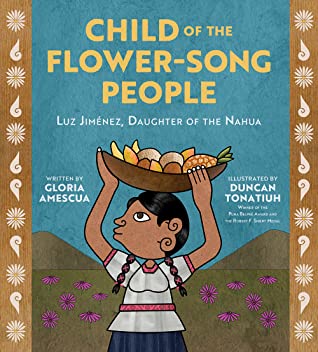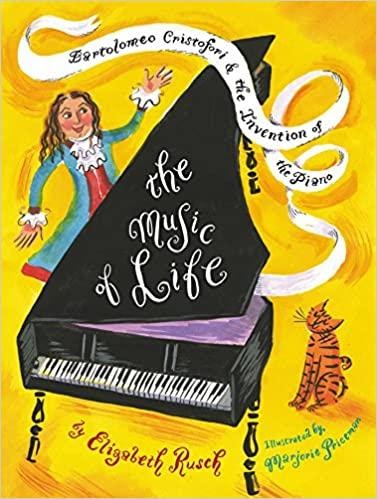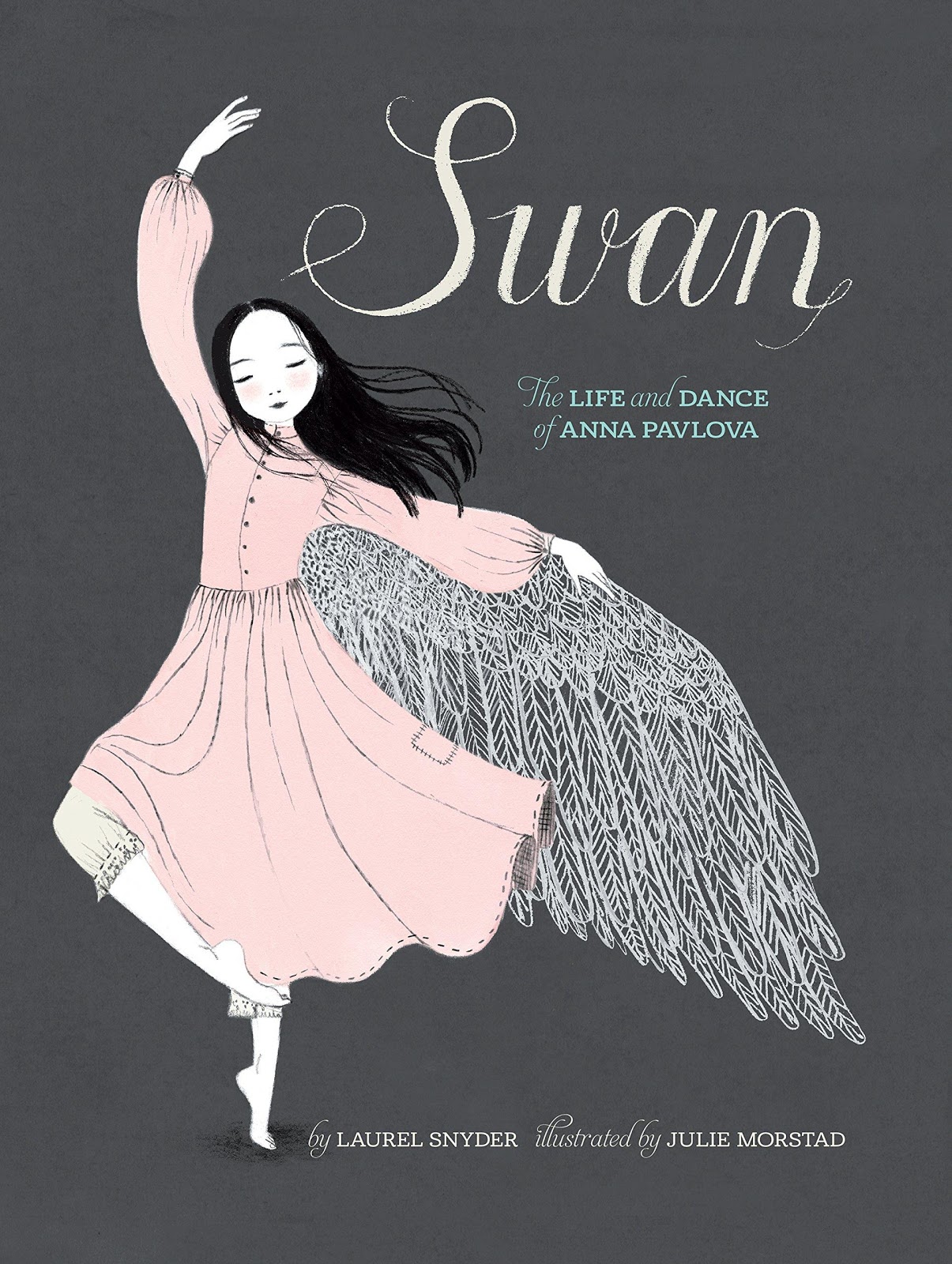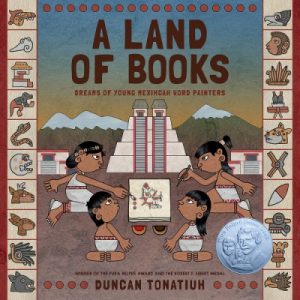 In his new book, A Land of Books: Dreams of Young Mexican Word Painters, Duncan Tonatiuh weaves verbal and visual narratives together to create an historic account of how the “Mexhicah who dwell in the valley of the volcanoes, make books….”
In his new book, A Land of Books: Dreams of Young Mexican Word Painters, Duncan Tonatiuh weaves verbal and visual narratives together to create an historic account of how the “Mexhicah who dwell in the valley of the volcanoes, make books….”
Long ago, before woodblock printing, moveable typeset and the printing press, the Mexhicah made books by painting images onto long strips of amatl, or paper, made from the bark of the amacuahuitl tree. The long strips of paper were folded accordion style and then bound by covers made from wood that were decorated with hides, feathers and jewels. The reader of the amoxtli (book) would unfold the pages so that it could be read. When the reader had finished, the amoxtli was folded and stored in the amoxcalli, the house of books. The tlahcuilohqueh, the painters of words, mixed plants and insects with clay, ash and water to create the paints they used to record the stories of the past and the present, and from which future generations would read to learn about the lived experiences of the Mexhicah.
Fortunately for readers of Duncan Tonatiuh’s newest amoxtli, the future is upon us. In Tonatiuh’s picturebook, he tells a story of Mexhicah book making from the perspective of the daughter of a tlahcuilohqueh. The young girl explains to her brother how their parents make the amoxtin. She tells him why the amoxtin are made and about the contents painted on the pages. She tells her brother that the tlahcuilohqueh need to know “a great deal” about many subjects including “religion, astronomy, warfare and history” for this is the content that fills the pages of the amoxtin.
As the story progresses, readers join the sister and brother at the flower festival where performers sing the stories printed on the amoxtin. There are no letters on the pages, only drawings that certain people like noblemen, priests and wise elders know how to read. For this reason, the amoxtin are read or sung aloud at special occasions, like the flower festival, so that all the villagers can hear the stories and see the paintings.
Readers familiar with Tonatiuh’s own amoxtin know that he draws artistic inspiration from the iconography of the Mixtec codices written centuries ago. As such, Tonatiuh’s distinctive illustrations in The Land of Books seem to authenticate the research-based narrative of the book making process featured in the text. Readers will find much of Tonatiuh’s research in the Author’s Note at the end of the text. A Glossary, Bibliography and list of websites complete the resources that readers can access to learn more about the Mexihcah and their book making process.
Tonatiuh’s picturebook serves as a history lesson about the Mexhicah culture that is not often told in schools today. History lessons sometimes imply that book making began with Gutenberg’s invention of the printing press when, in fact, books were being printed in China, Korea and Mexico long before Gutenberg began printing his texts in Europe. Fortunately, Tonatiuh’s newest picturebook provides a more accurate account of the evolution of book making which adds another layer of truth about the history of books and book making on a global scale. -Recommended by Mary L. Fahrenbruck, Associate Professor, New Mexico State University
Author/Illustrator: Duncan Tonatiuh
ISBN: 9781419749421
Publisher: Abrams Books for Young Readers
PubDate: November 15, 2022
Each month a committee of Worlds of Words advisors recommends a book published within the last year. Our hope is to spark conversations on our website and on social media about the book that expand global understandings and perceptions. Please join us by leaving a comment. You can also share your thoughts with us by using the hashtag #WOWRecommends on social media. Check out our alphabetical listing of all the books featured in WOW Recommends.

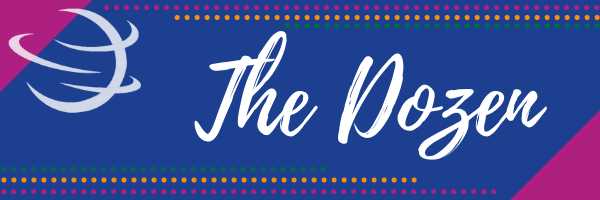

 In his new book, A Land of Books: Dreams of Young Mexican Word Painters, Duncan Tonatiuh weaves verbal and visual narratives together to create an historic account of how the “Mexhicah who dwell in the valley of the volcanoes, make books….”
In his new book, A Land of Books: Dreams of Young Mexican Word Painters, Duncan Tonatiuh weaves verbal and visual narratives together to create an historic account of how the “Mexhicah who dwell in the valley of the volcanoes, make books….”